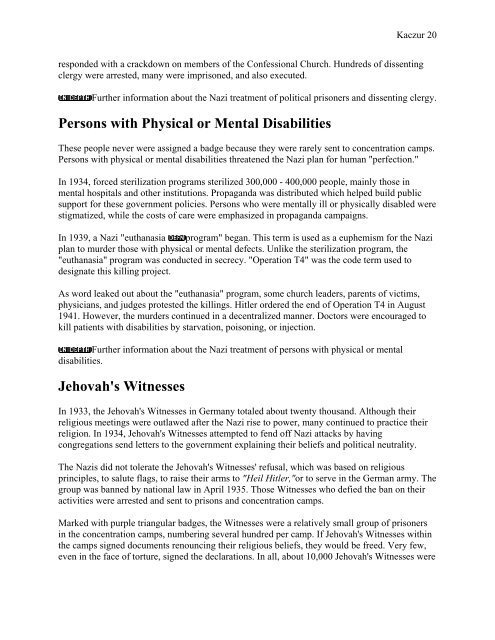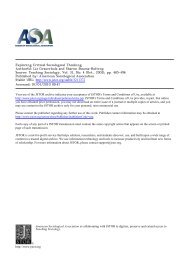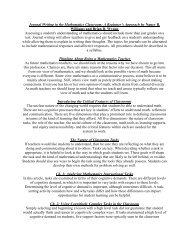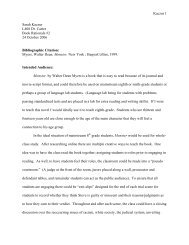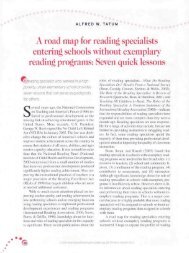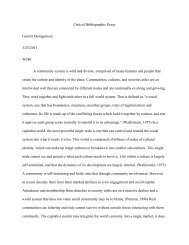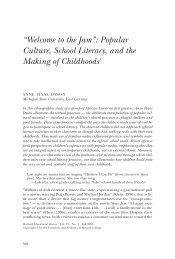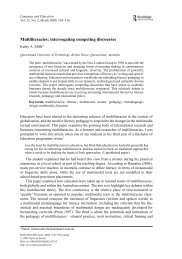Night. Night - Oncourse
Night. Night - Oncourse
Night. Night - Oncourse
Create successful ePaper yourself
Turn your PDF publications into a flip-book with our unique Google optimized e-Paper software.
Kaczur 20<br />
responded with a crackdown on members of the Confessional Church. Hundreds of dissenting<br />
clergy were arrested, many were imprisoned, and also executed.<br />
Further information about the Nazi treatment of political prisoners and dissenting clergy.<br />
Persons with Physical or Mental Disabilities<br />
These people never were assigned a badge because they were rarely sent to concentration camps.<br />
Persons with physical or mental disabilities threatened the Nazi plan for human "perfection."<br />
In 1934, forced sterilization programs sterilized 300,000 - 400,000 people, mainly those in<br />
mental hospitals and other institutions. Propaganda was distributed which helped build public<br />
support for these government policies. Persons who were mentally ill or physically disabled were<br />
stigmatized, while the costs of care were emphasized in propaganda campaigns.<br />
In 1939, a Nazi "euthanasia program" began. This term is used as a euphemism for the Nazi<br />
plan to murder those with physical or mental defects. Unlike the sterilization program, the<br />
"euthanasia" program was conducted in secrecy. "Operation T4" was the code term used to<br />
designate this killing project.<br />
As word leaked out about the "euthanasia" program, some church leaders, parents of victims,<br />
physicians, and judges protested the killings. Hitler ordered the end of Operation T4 in August<br />
1941. However, the murders continued in a decentralized manner. Doctors were encouraged to<br />
kill patients with disabilities by starvation, poisoning, or injection.<br />
Further information about the Nazi treatment of persons with physical or mental<br />
disabilities.<br />
Jehovah's Witnesses<br />
In 1933, the Jehovah's Witnesses in Germany totaled about twenty thousand. Although their<br />
religious meetings were outlawed after the Nazi rise to power, many continued to practice their<br />
religion. In 1934, Jehovah's Witnesses attempted to fend off Nazi attacks by having<br />
congregations send letters to the government explaining their beliefs and political neutrality.<br />
The Nazis did not tolerate the Jehovah's Witnesses' refusal, which was based on religious<br />
principles, to salute flags, to raise their arms to "Heil Hitler,"or to serve in the German army. The<br />
group was banned by national law in April 1935. Those Witnesses who defied the ban on their<br />
activities were arrested and sent to prisons and concentration camps.<br />
Marked with purple triangular badges, the Witnesses were a relatively small group of prisoners<br />
in the concentration camps, numbering several hundred per camp. If Jehovah's Witnesses within<br />
the camps signed documents renouncing their religious beliefs, they would be freed. Very few,<br />
even in the face of torture, signed the declarations. In all, about 10,000 Jehovah's Witnesses were


